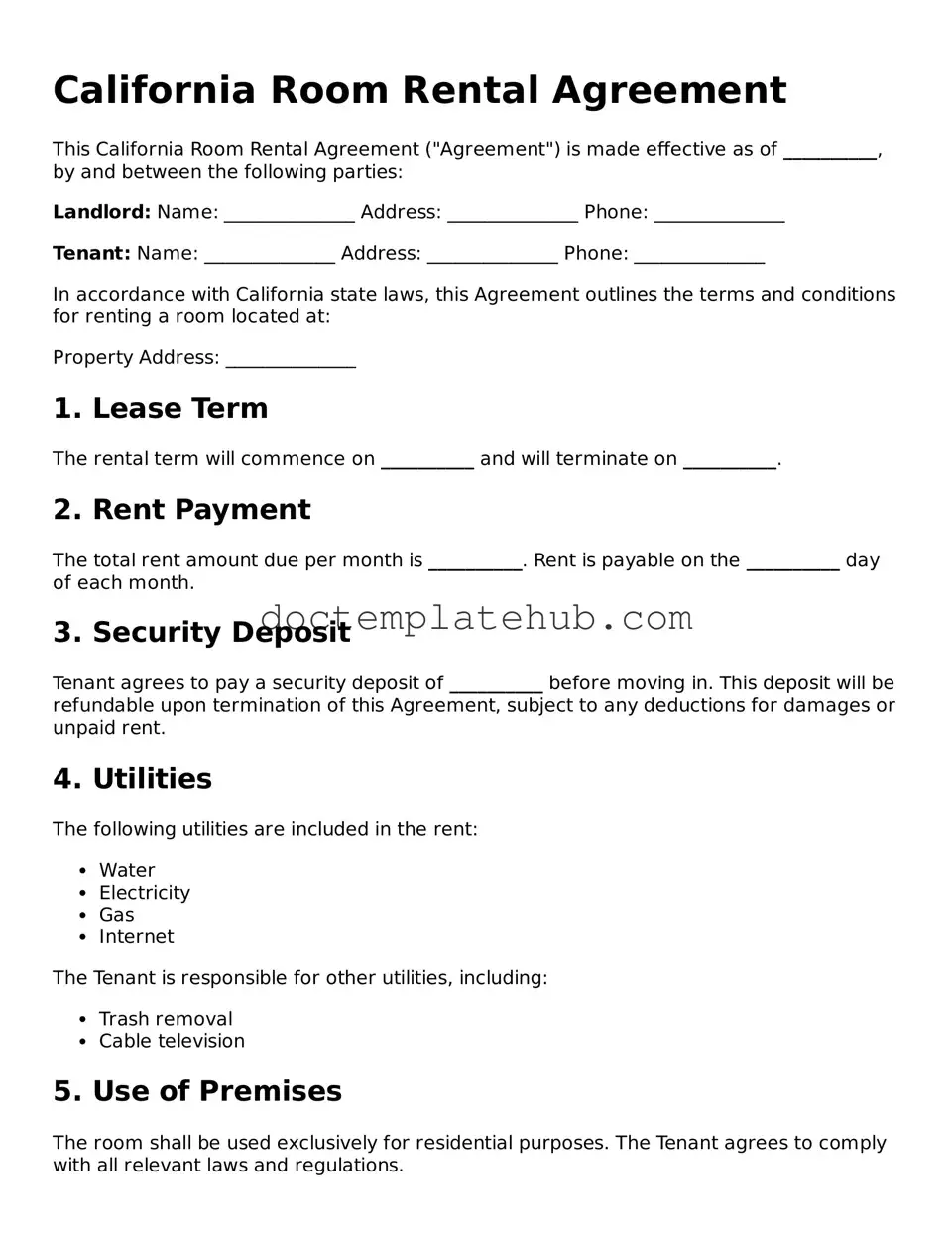What is a California Room Rental Agreement?
A California Room Rental Agreement is a legal document that outlines the terms and conditions between a landlord and a tenant for renting a residential property. It serves to protect the rights of both parties by clearly detailing responsibilities, payment terms, and other essential aspects of the rental arrangement.
What key information should be included in the agreement?
The agreement should include the names of the landlord and tenant, the rental property address, the rental amount, payment due dates, the duration of the lease, security deposit details, and any rules or regulations specific to the property. Additionally, it should cover maintenance responsibilities and procedures for terminating the agreement.
How long is a typical rental agreement in California?
Rental agreements in California can vary in length. They may be set for a fixed term, such as one year, or be month-to-month. A fixed-term lease provides stability for both parties, while a month-to-month lease offers flexibility. It's essential to choose the duration that best fits your needs.
What happens if the tenant fails to pay rent?
If a tenant fails to pay rent, the landlord has the right to issue a notice to pay rent or quit. This notice typically gives the tenant a specific timeframe to pay the overdue rent or vacate the property. Failure to comply may lead to eviction proceedings. It's important for both parties to understand the process and their rights.
Can a landlord enter the rental property without notice?
In California, landlords must provide reasonable notice before entering a rental property, usually 24 hours. Exceptions exist for emergencies, such as a fire or flood. Respecting privacy is crucial, and tenants should feel secure in their living space.
What is a security deposit, and how much can a landlord charge?
A security deposit is a sum of money collected by the landlord to cover potential damages or unpaid rent. In California, the maximum security deposit is typically one month's rent for unfurnished properties and two months' rent for furnished ones. Landlords must return the deposit within 21 days after the tenant vacates, minus any deductions for damages.
Can tenants make changes to the property?
Tenants generally need permission from the landlord before making any changes to the property, such as painting walls or installing fixtures. The rental agreement may specify what modifications are allowed. Always seek approval to avoid disputes later on.
What should I do if there is a dispute with my landlord?
If a dispute arises, communication is key. Start by discussing the issue directly with your landlord. If that doesn’t resolve the matter, you may consider mediation or seeking legal advice. Knowing your rights and the terms of your rental agreement can help navigate the situation effectively.
